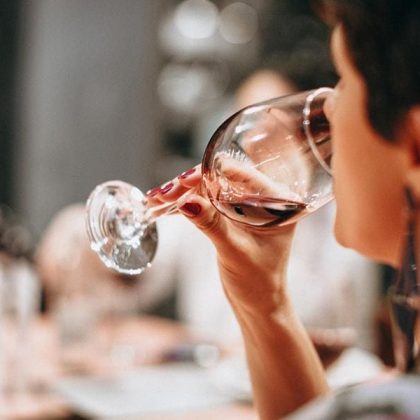Suckering, the secret to healthy stocks
In May, the vines begin to bud. Suckering is the removal of undesired shoots from the vine stocks to encourage the berry-bearing branches to develop. Suckers are shoots that will not produce any grapes. It is important to eliminate them during the growth period so that the fertile branches will yield more fruit.
The quantity and vigour of suckers will depend on the grape varieties, the vigour of the stocks and the age of the vineyard. An old vineyard will have fewer suckers. Our aim here is to promote the fruit-yieldingbuds and direct thesap to where it ismost needed” explains Antoine Dupré, Vineyards Director.”Suckering is done totally manually we don’t use any machinery or chemicals.”
The technique improves air circulation by reducing vegetation. It is also highly recommended to curb the risks of mildew contamination.The wines produced by our winery are generally treated in May once the first leaves appear. Antoine points out that “at Domaine de Longue Toque, our vines are favourably situated and exposed to the Mistral. This wind exposure dries the plants and drastically impedes the advancement of the disease. It’s one of the reasons why–after practising ‘Agriculture Raisonnée – Terra Vitis’ certification for over 10 years–we shifted to organic farming. We are moving into our second year of conversion.”
Disbudding, a delicate technique
Disbudding complements suckering. This technique consists of removing undesirable young shoots during their development. Disbudding can prove a rather complicated technique since certain grape varieties are considerably prone to coulure. Grape shatter can completely destroy a harvest and have devastating knock-on effects on the future harvest. “It calls for real expertise. We generally only sucker our Grenache vines disbudding is rarely necessary.”
Trellising or the art of good exposure
Trellising is the method of attaching young shoots to wires thereby guiding the vine growth. Trellising helps to maximise the amount of the plant exposed to the sun. A vine left to grow naturally will produce branches that trail on the ground, diminishing its exposure to sunlight.
Encouraging photosynthesis is the best way to improve both the yield and quality of the fruit. Not forgetting too, of course, that it directs the plant’s growth upwards, making room for workers to move between the rows of wines to fertilise, tend and harvest the vines.
“At our winery, we practice a traditional technique whereby we raise the wires as the vine develops.” We trellis our Syrah in May, while for Grenache there is no need.
The vine, under constant care
At this time of the year, we continue to tend the vines, mostly practising organic viticulture, so the vines are not overrun by grass. “We manually till all our soils to prevent the growth of weeds and in doing so promote biodiversity.”
As you’ve probably guessed, the secret to a fine vintage is not just the climate and quality of the vineyard. Manual labour is absolutely essential!
Rubrics
Découvrez plus d'articles...

The vineyard and wine cellar in winter
What happens in the world of wine during the winter period? After the hustle and bustle of autumn, the harvests and vinification process, comes winter, a season devoted to maturation and looking after the vines.

In 2018, we will continue to strive to be a Responsible Company!
In this new year, our wish to help build a world that respects both mankind and the environment is as strong as ever. This can be seen through the number of our projects for 2018 that are closely related to our convictions as a Responsible Winery. We’re delighted to be given the opportunity to tell you about them!

Discovering the art of pairing wine and chocolate
A morsel of white chocolate, Black Forest gâteau, pieces of stem ginger wrapped in chocolate, or Mexican chicken in chocolate sauce—all very appetising, but which wine would you serve with each one? Food and wine pairings factor in a combination of elements, such as the terroir, our powers of concentration, the circumstances of the tasting session, our sense memory and more. We guide you through some of the basic principles of this fascinating world!







